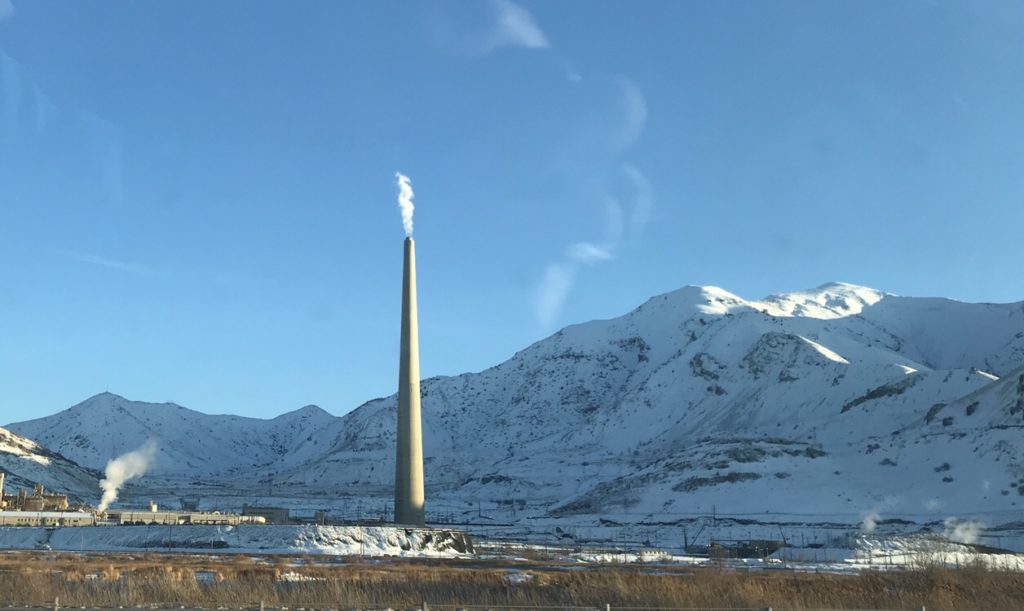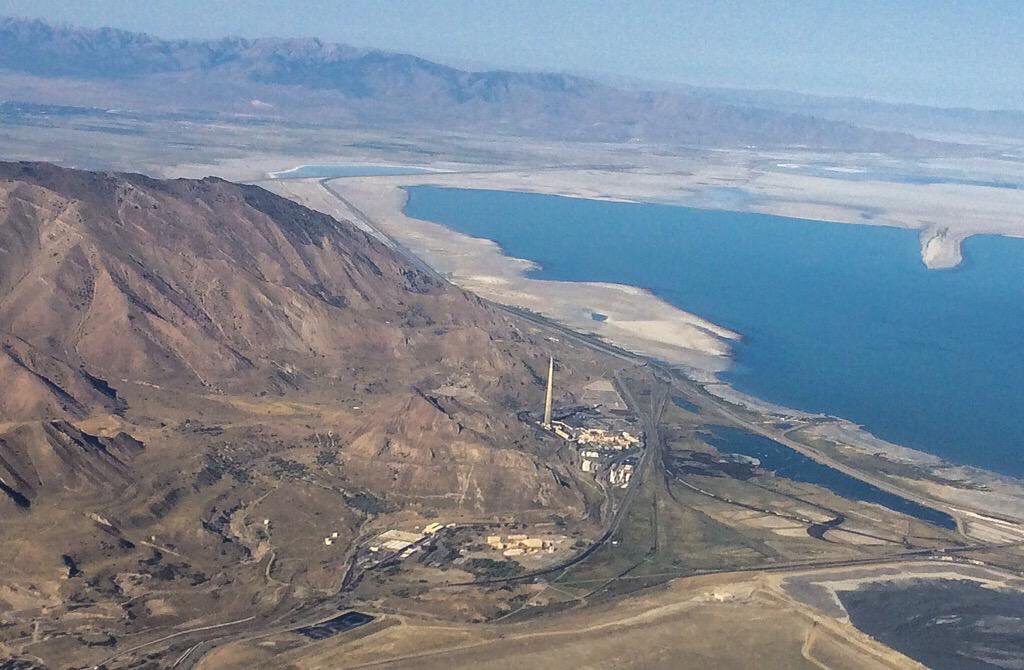The Kennecott Garfield Smelter smokestack is the most iconic smokestack of the west. That’s right, an iconic smokestack. It’s iconic because you can’t miss it. It’s huge! At 1,215 feet tall, it’s the tallest free-standing structure west of the Mississippi River and the fourth tallest smokestack in the world. Standing 18 miles west of Salt Lake City, it seems to be in the background wherever you around in town. It’s prominent when flying in and out and it begs for your attention when you drive west along I-80. The smokestack is part of Kennecott’s copper mining operation. The smelter processes the copper concentrate and acts as a waste heat to power generating plant.
It’s towering height is what makes this smokestack iconic. Building a tall smokestacks was accepted practice on the premise that “dilution is the solution to pollution.” This smokestack was opened in the 1974 in response to the creation of the Clean Air Act. If the pollutants were released high enough, then it would help dilute the emissions and disperse the polluted air higher into the sky. Unfortunately, it doesn’t work that way. Here’s a New York Times article from 1985 describing how the EPA recognized that tall smokestacks don’t reduce the pollutants. It only puts the pollutants higher into the sky.
It’s been decades since we realized tall smokestacks aren’t the best answer to industrial pollution. We’re still looking for the best way to burn fossil fuels and have productive industry with reduced air emissions. Zero-emission fossil fuel burning doesn’t exist. There are interesting new technologies trying to improve this problem. For example, there is a new zero-emissions power plant you can read about here, here, and here. The idea is to capture and reuse the carbon dioxide emissions, and other pollutants, from burning natural gas.
There are plenty of other smokestacks around the west. None is as prominent or grabs your attention like the giant tower west of Salt Lake City. Did I miss an iconic smokestack from your neck of the woods?
More iconic smokestack photos!
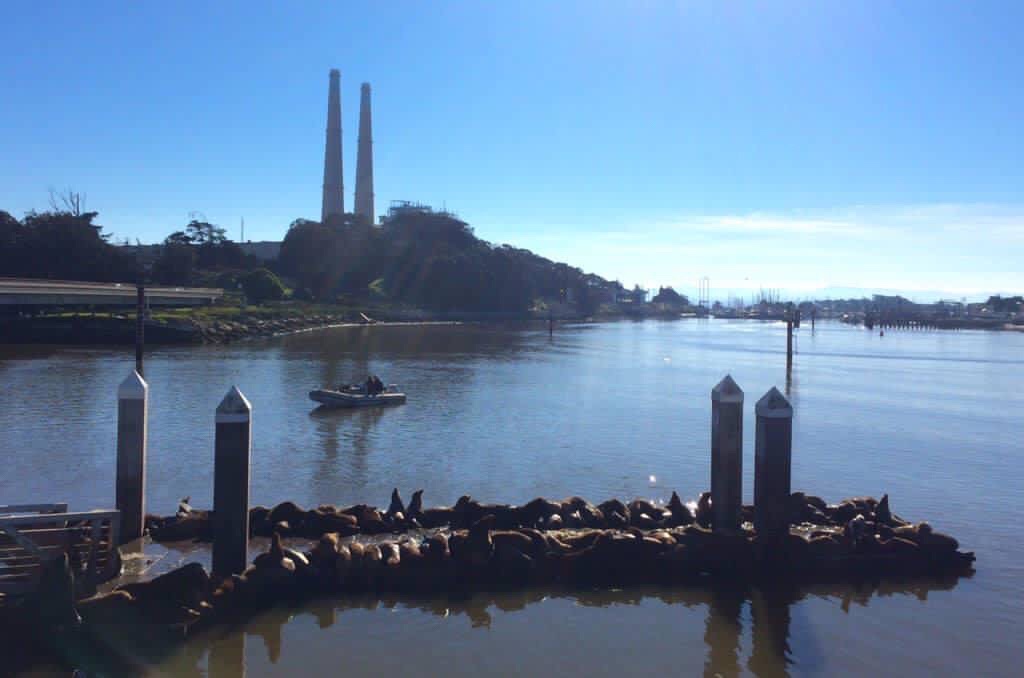
Seals and otters relax in the shadow of the Moss Landing Power Plant’s smokestacks on Monterey Bay, CA.
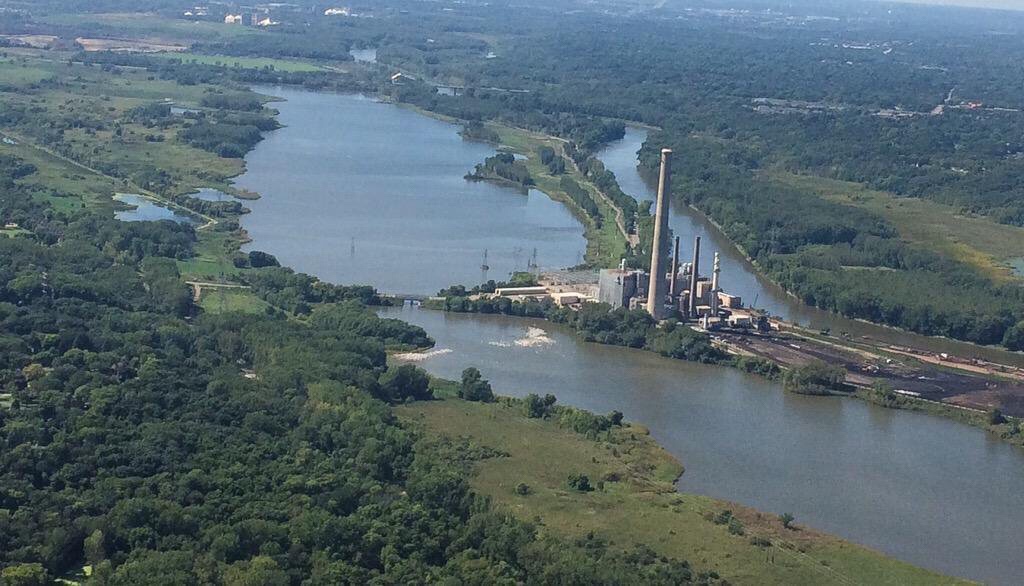
Smokestack of the Black Dog Generating Station on the Minnesota River, a few miles west of the Mississippi River.
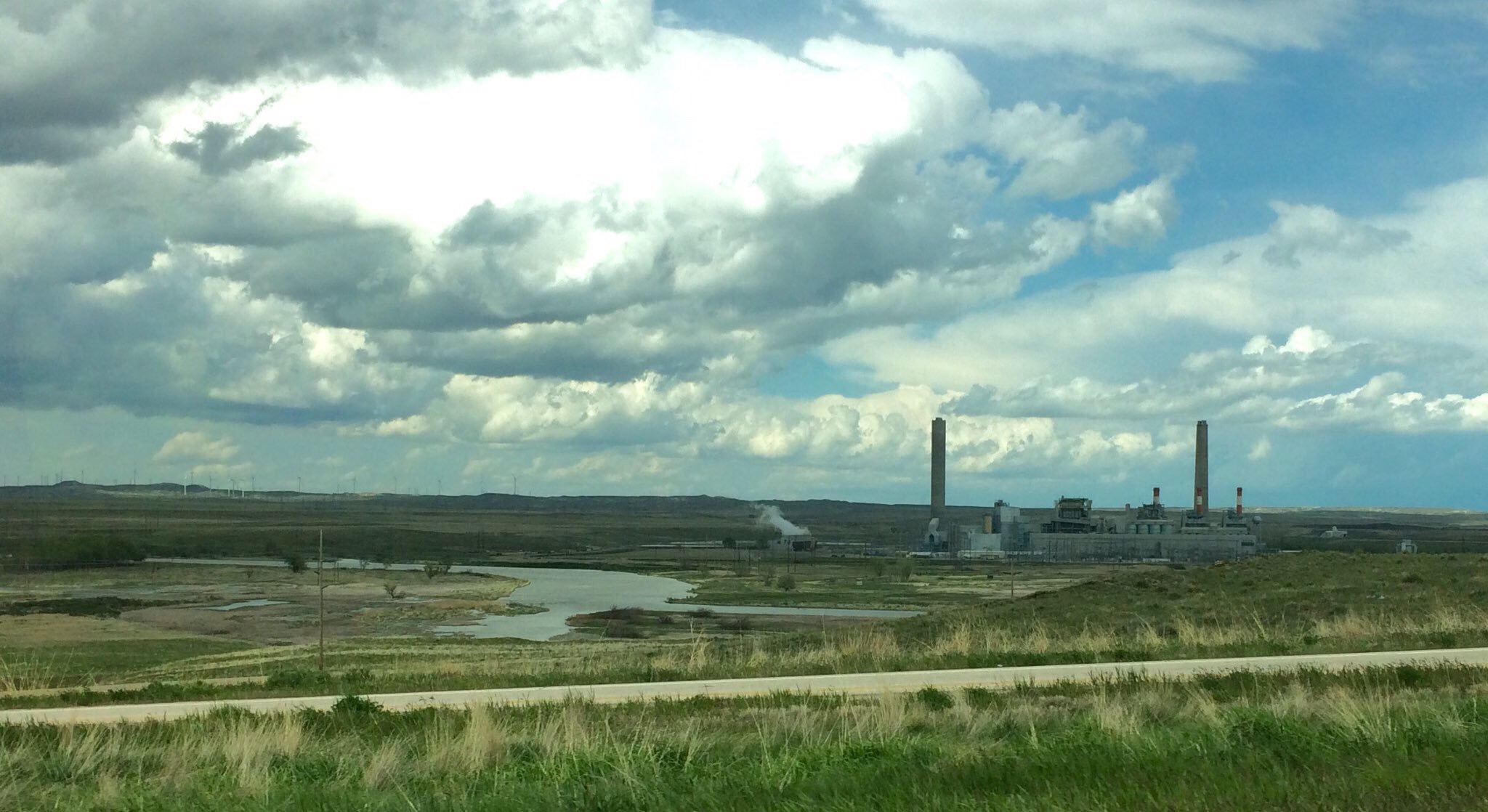
Smokestacks of the Dave Johnston Power Plant, 30 miles east of Casper, WY.

